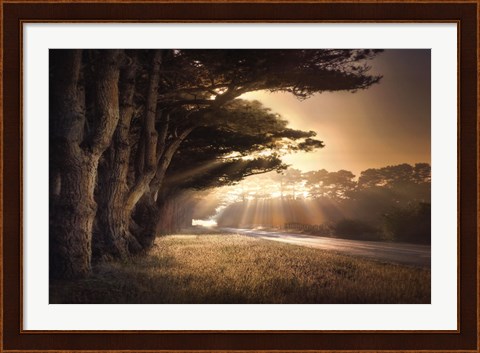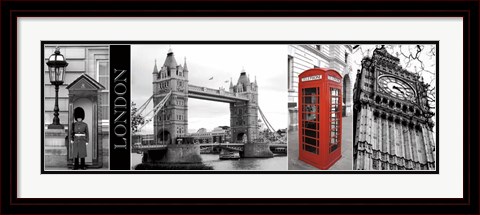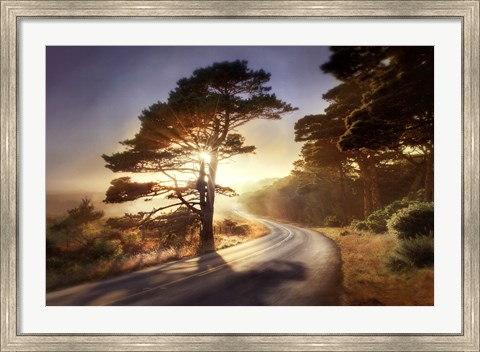by Fulcrum Gallery Staff
15. October 2015 08:47

“No Place to fall” is a beautiful, lively photograph taken by none other than William Vanscoy. Vanscoy believed that what was being expressed made photographic art rather than what was being seen. He merged together traditional and digital photographic landscape because he believed it was important to capture the beauty of life and nature.
Style Of Art
William Vanscoy did a wonderful job with making this piece one that is well sought-after. By capturing timeless and detailed scenery, his photographs look as if you are looking at the scenery in person rather than a photograph. Vanscoy uses digital capture and extensive digital post-production to make his photographs. Sometimes he combines multiple photographs to create one realistic image. “No Place to fall” made it clear that Vanscoy did not need to describe or give further explanation to his pieces; he rather lets them speak for themselves. This gives the viewer a wide range of imagination to explore while looking at this photograph. This piece creates a sense of:
· Wonder.
· Serenity.
· Beauty.
· Self-expression.
This photograph is not explained which leaves it up to you to interpret the meaning.

Accenting The Piece
“No Place to fall” is a very bold piece. Although it is a big enough statement on its own, it can easily use small accents when hanging in a room. This piece could go well in any type of room but would work very well in a living room. By using beige, brown or dark tan colors around the room, this photograph will pop even more. Making this the focal point of the room would be a bold choice and really pay off when your guests can’t take their eyes off of it. Pairing the photograph with a beige colored picture frame would contrast with the darkness of the painting and bring out the details of the work.
Unintentional Popularity
Many owners of this piece describe it as “beautiful” and that is exactly what it is. Vanscoy captured this scenery perfectly. Some elements that reflect beauty are:

· The sun shining through the trees.
· The balance between light and dark.
· The extreme detail in the photograph that Vanscoy captured.
· The aspect of serenity.
Because of these elements, there is no question why this piece is so popular. Why wouldn’t you want to have this calming and beautiful photograph in your house or place of work? The only way to explain this photograph to a viewer would be to call it a “statement piece.” You could add other photographs around that complement “No Place to fall” but it could also work well standing on its own. This is such a bold piece; you could have bare beige colored walls with this, as your only hanging piece and the room would be beautiful.
Although the piece could be interpreted many different ways, one thing we can all agree on is the beauty is exudes. With the contrast, realism and serenity of this photograph, it’s no wonder it’s so popular and could work so well in many different settings.
Tags: art for dad, art for kids, art for Mom, art framed, Art Gallery, Art Gifts, art prints framed, art prints, art prints on canvas, Color Photography, featured artwork, featured color, featured color art, flower art, floral art on canvas, flower art for kids, field, field art, fine art, FulcrumGallery.com frames, Fulcrum Gallery, FulcrumGallery frames, living room art, landscapes, photograph, photography, photography on canvas, scenic art, scenic artwork, scenic photography, seasonal paintings, seasonal photography, seasons, seasons art, sepia, sepia art
Featured Artist | Framed Art | Photography | Scenic Art | Spring Art | Summer | Winter Art
by Fulcrum Gallery Staff
13. January 2015 09:41
In today’s installment of decorating tips we wanted to talk briefly about the art of conservation framing and how it may protect your favorite, Fulcrum Gallery prints from harm. It is typically a six-part process that starts with selecting art prints that have been created using the highest grade paper possible and goes on from there. Some art lovers may opt to end the process quickly by laminating their prints whereas others may want to continue by choosing museum quality, custom framing materials and techniques. At this time, we’d like to focus on the latter.
If you are hoping to have your print preserved using conservation framing techniques, it’s important to first realize that everything included in the framing package has a role to play. Therefore, it does not pay to only do things half way. In other words, once you make a commitment to a certain level of art conservation, its best to adhere to that level of quality all the way through. Otherwise, you’ll be jeopardizing the integrity of the entire framing package.
The purpose of conservation framing, as you've probably guessed, is to protect the print from moisture, dust, chemicals, insects, temperature change and other atmospheric pollutants. So every piece of framing material must be chosen with that in mind. That said, you’ll typically need the following, acid-free, buffered items for a museum quality job:
- Hinging and Mounting Materials (e.g. Japanese Tissues and Mounting Corners)
- Fade/Bleed Resistant Window Mats
- Frame Backing Paper
- pH-Neutral Tapes or Adhesives
- Frame Backing Board
- UV Filter Glazing
- High Quality Frame
The UV filter glazing is generally placed into the frame first. The window mat is then placed against the UV filter glazing, followed by the print. That way the print does not make direct contact with the glass. Next comes the hinging and mounting materials, which are designed to keep the print from moving around in the mat window. Once the print has been mounted into position, a back mat is added. The frame backing paper comes afterward. It is affixed to the frame using pH-neutral tapes or adhesives. Some framers also opt to finish things off with a few staples to further keep the backing paper in place. Either way, the overriding goal is to make sure that the frame package is air-tight and protected from full UV light exposure.


